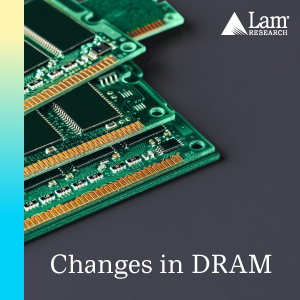
The ability to process data is foundational to our smart, connected world. Microprocessors, in turn, rely on memory chips to store the data they need while working. One of the most popular types of memory is dynamic random access memory (DRAM), and it can be found in many of our favorite electronic devices. Over the years, the amount of memory in mobile phones has increased from 128 MB to 4 GB or even 6 GB today.
Memory capacity increases have traditionally been achieved by shrinking device features: with each generation, the tiny structures that make up a memory cell were reduced in size, allowing more of them to fit in a given area of a chip. Continued scaling, however, is getting increasingly difficult, as the device structures approach physical limitations.
Lam’s vice president of computational products, David Fried, recently got together with Ed Sperling, editor-in-chief at Semiconductor Engineering, to discuss how DRAM is evolving, the challenges surrounding this critical memory technology and more. You can watch a recording of their conversation by clicking the video below, or visit the original article at Semiconductor Engineering.
